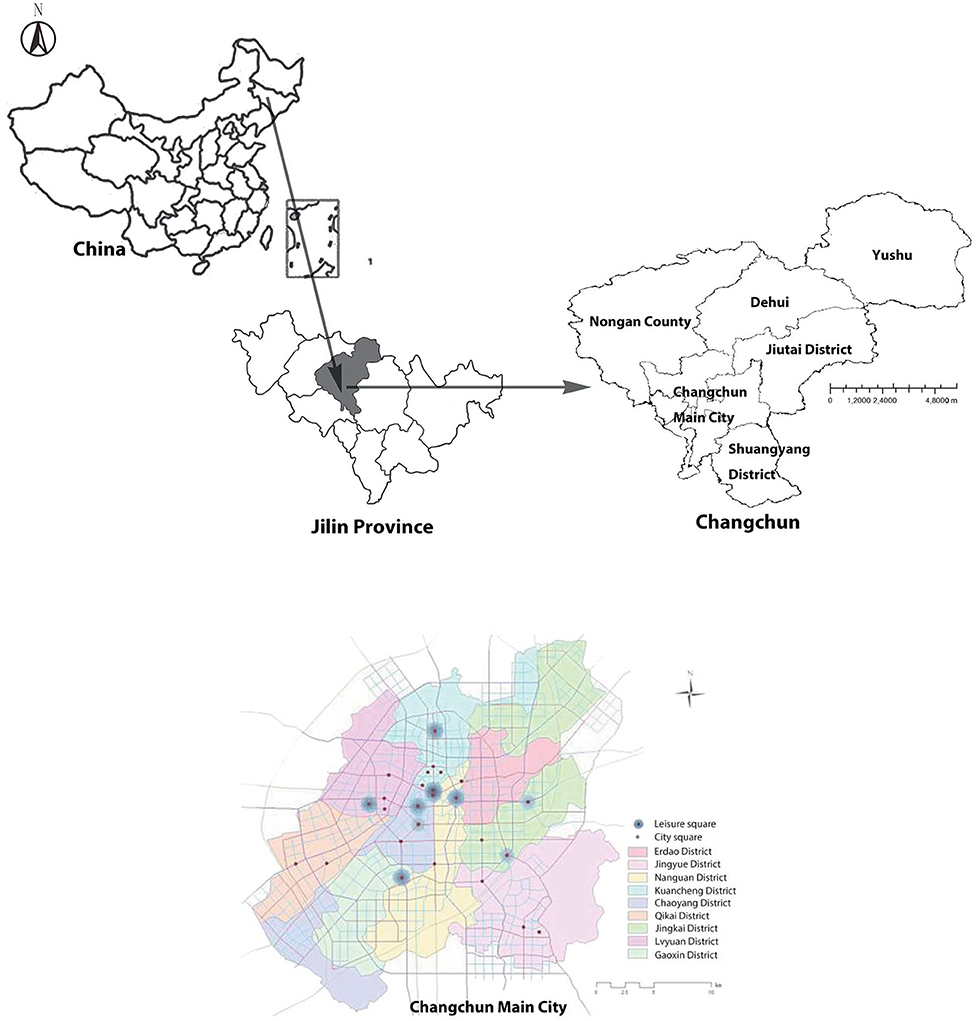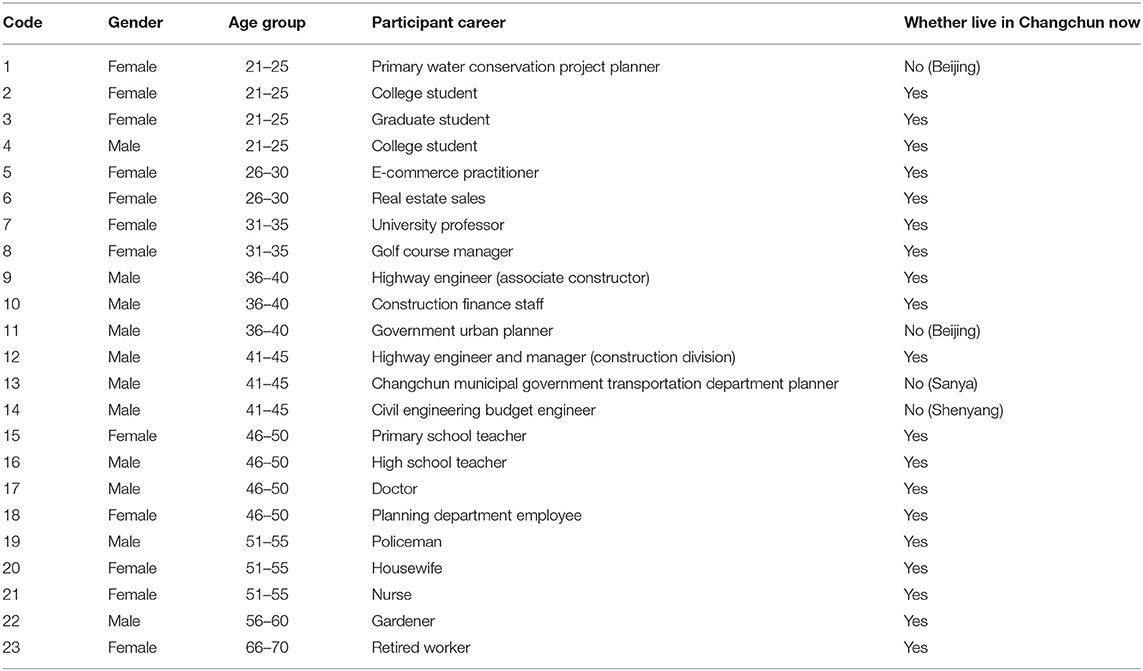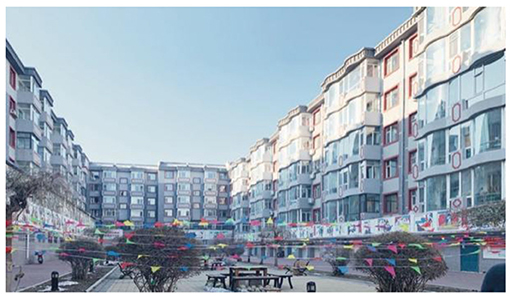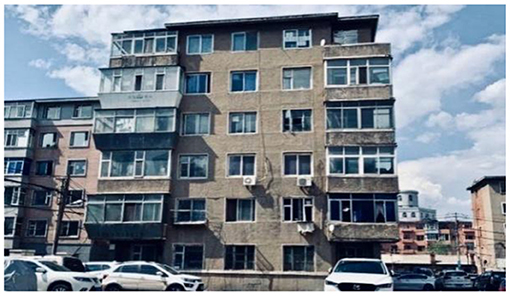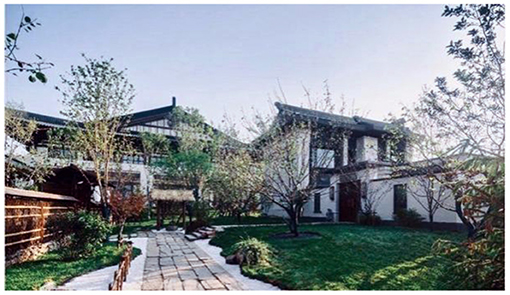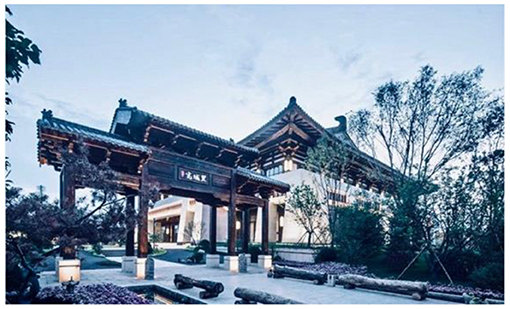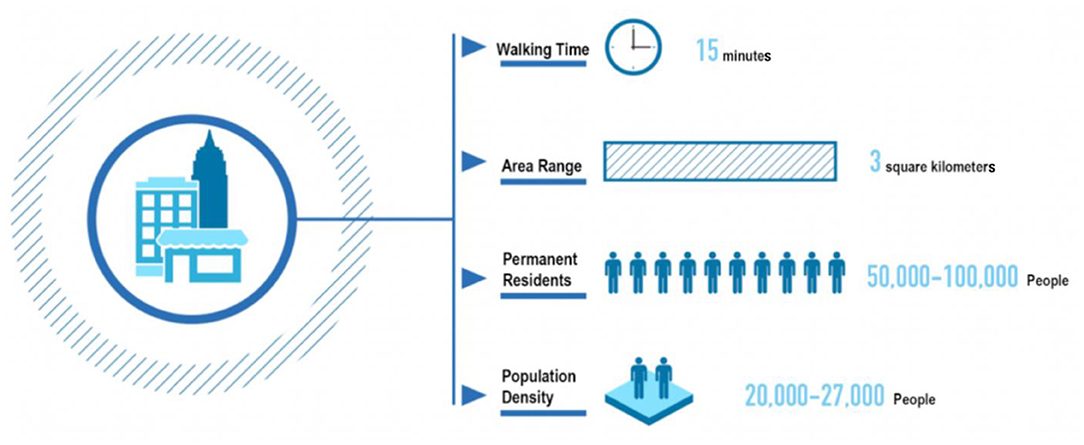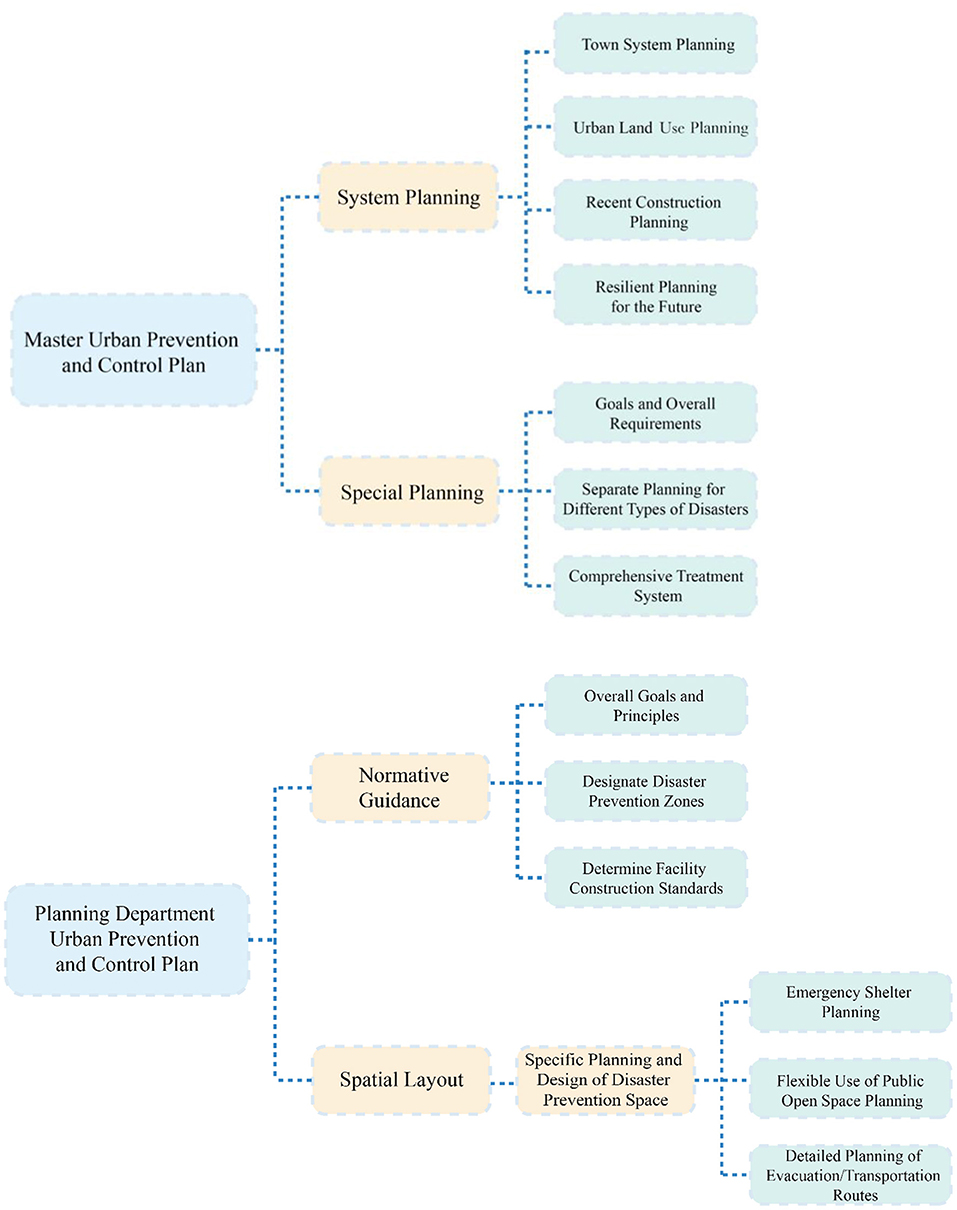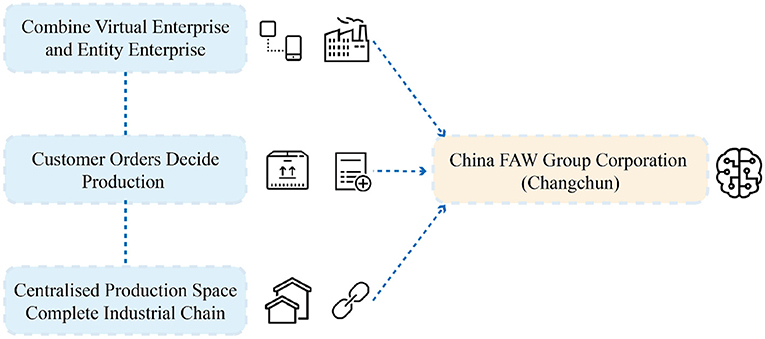The Effects of Spatial Planning, Well-Being, and Behavioural Changes During and After the COVID-19 Pandemic
- 1Bartlett School of Planning, University College London, London, United Kingdom
- 2School of Architecture and Cities, University of Westminster, London, United Kingdom
- 3School of Foreign Studies, China University of Mining and Technology, Xuzhou, China
- 4Martin Centre for Architectural and Urban Studies, University of Cambridge, Cambridge, United Kingdom
COVID-19 poses a massive challenge to urban public-health emergency and governance systems. Urban planners and policymakers engaged in spatial planning and management should carefully consider how a “people-oriented” principle can be incorporated into spatial-planning systems to reduce the negative impacts on both cities and people. However, there is limited literature discussing the aforementioned issues, particularly using qualitative methods. Therefore, this research aims to explore the implications of COVID-19 on spatial planning, well-being, and behavioural change using Changchun as a case study. Semi-structured interviews are used to examine the views and insights of 23 participants. Our results show that, first, the shift to home working has changed people's way of life, affected their subjective well-being, and significantly affected spatial planning within cities, placing greater demands on architectural design and community spatial planning. Therefore, additional open public spaces and a more supportive infrastructure are required. Second, it is found that Changchun has not established an effective community-based spatial planning system, something which should have been taken into consideration in the master plan for the future. Third, our findings suggest that being a resilient city is vital for the sustainable development of second-tier cities like Changchun, which is reflected in urban development patterns, disaster prevention, and long-term functional layout, among other aspects. This study contributes to the existing literature on resilient cities, particularly from the perspective of sustainability with regard to resilience to and recovery from major urban crises. In terms of policy implications, planning departments should work with public health and public safety departments to formulate guidelines and management rules in order to improve the spatial planning of cities during periods of extraordinary change and challenge.
Introduction
The outbreak of the COVID-19 pandemic caused a series of practical problems. At this critical moment, the governments in many countries, including China, committed to national and joint mobilisations aimed at transparently tackling and controlling the pandemic. Globally, people have braved the dangers of the virus and overcome many difficulties together (Arab-Zozani and Hassanipour, 2020). However, the pandemic has also exposed shortcomings in urban spatial planning. Spatial planning is the long-term planning and arrangement of territorial space, resources and layouts. It aims to achieve effective control and the scientific governance of territorial space and promote a balance between development and protection (OECD, 2001; Hu et al., 2013; Adams et al., 2016). Spatial planning requires consideration of the “multiple-gauge fusion”1 mode of planning, implementation, management and supervision mechanisms, in addition to other factors such as the protection of ecology (Faludi and Institute, 2002; Dühr et al., 2010).
Due to the way that the COVID-19 virus is transmitted and the consequent need for home-quarantine measures, urban planning, and governance are likely to change considerably in the future. The impact of the pandemic has been a shock to the operation of most modern cities. China is a country comprising a vast territory and highly differentiated natural conditions, and it is often affected by natural and man-made disasters (Hayford and Cheng, 1997). The negative effects of disease transmission, environmental pollution, and terrorist attacks can no longer be ignored (Ibrahim, 2007; Seo, 2019). As cities increasingly need to accommodate a high population density and significant economic activity, these negative effects will be magnified. Since the initial outbreak of COVID-19 in 2019, it has seriously threatened the lives and health of the global population. For many years prior to this, urban planning had primarily focused on the economy, function and aesthetics of urban areas, and paid insufficient attention to disaster prevention and mitigation.
This research explores the impact of COVID-19 on the spatial planning of the second-tier city of Changchun and proposes suggestions for creating resilient cities that provide security and convenience for their citizens. The remaining sections are organised as follows: section Literature review reviews the literature regarding the general impact of working from home on the spatial planning of cities, as well as considering spatial planning from the perspective of employment demands and daily life needs. Section Case study introduces the case study of Changchun, and Section Methodology describes the data collection and methodology. Section Findings and discussion presents the findings and a discussion on how to promote the development of resilient cities and tackle the urban crisis in terms of the spatial planning. Finally, Section Conclusion summarises the key findings and provides policy implications.
Literature Review
Spatial Planning: Thoughts From the Perspective of Employment and Everyday Life Demands
Employment Demand
A reasonable allocation of human flow, logistics, and information flow is crucial to the healthy development and emergency response of cities (Krykavskyy and Woronina, 2015; Kauf, 2016). With central cities at their core, urban agglomerations drive the flow of people, commodities, information, and business in the surrounding cities, which is a key stage of development that is crucial to the balanced development of cities across the country (Korczak and Kijewska, 2019; Jiao, 2020). The large number of people travelling across the region to their places of work and to social events was a key factor in making it difficult to control the pandemic. This left cities vulnerable to infectious disease. The outbreak of COVID-19 in Wuhan during the Spring Festival travel rush meant the virus spread to other Chinese cities with the flow of migrant workers. From a spatial perspective, those Chinese cities with a relatively large number of confirmed COVID-19 cases were in the Wuhan 1+8 City Circle (Wuhan Metropolitan Area)2 (Hubei Provincial Development Reform Commission, 2009).
There are three components to successful urban spatial planning with regards to employment demand. First, small and medium-sized cities should have the capacity to be self-sufficient, and should be equipped to fulfil their basic and non-basic functions (Chen et al., 2006). There were differentiated response levels and variations in urban management in different regions during the COVID-19 outbreak. This demonstrates the importance of a city being self-sufficient: not only to ensure that its normal operations can continue, but also that it can operate efficiently in response to emergencies (Ali et al., 2012). Second, small and medium-sized cities should be able to provide basic employment services and manage the return to work of migrant workers. In recent years, measures have been taken to attract talented individuals to cities and to encourage members of the population to return, which will be a necessary process for the development of cities in the future. This process must be carefully planned to ensure it can be undertaken safely (Chen et al., 2006). Thirdly, with regard to the layout of urban interior space, due attention should be paid to the balance between employment areas and residential areas. The distribution of employment and residential space should be rationally arranged to reduce long-distance daily commuting within the city (Engelfriet and Koomen, 2017). This will have benefits for daily life, and clear advantages in the mitigation of infectious diseases. With the continuous growth in industries and employment on a regional and city level, the long-term development of a city can guide the orderly flow of people through space. This promotes urban development, improves quality of life, and can have a positive effect on the prevention and control of public-health emergencies (Zou, 2020).
Demands of Daily Life
After the outbreak of the Coronavirus epidemic, to try to contain the spread, the government adopted a series of urgent control measures such as home isolation to limit the movement of people, which effectively prevented the epidemic from spreading further (NHC, 2020; NHS, 2020). As a result, a degree of disorder in relation to people's material life and a spiritual/psychological imbalance has occurred due to the resultant restricted living space, for example, inadequate supplies, psychological disorders, and problems associated with living in a confined space.
Cities provide people with rich environments for business, medical care, housing, and public services. However, many services which support people's daily lives are not well-developed from the perspective of public safety. These include transport, logistics, and health services. It was only when the pandemic broke out that it became apparent that the capacity of medical and health facilities in many cities was insufficient (Ye and Luo, 2020). When disaster strikes suddenly, infrastructure and transport systems are likely to be affected. Moreover, the lack of access, coordination, and standardisation of emergency-medical or infrastructure resources can impair decision-making and execution capabilities (Disaster Research Center, 1995; NRC, 1999; Holguín-Veras et al., 2007).
The COVID-19 pandemic required the use of temporary emergency facilities. These are large public facilities whose function changes in the event of a disaster to enable them to serve as temporary hospitals (Chen and Yu, 2016). There is an ongoing conflict between the needs of planning and industry, and the “urban disease” that spawned a series of construction and environmental standards that have to be adhered to, such as housing ventilation conditions, sunshine spacing,3 and public facilities such as urban parks, public open space, and greenways. Therefore, urban planning should not only take into consideration the potential use of existing facilities, but also the possible location of temporary new facilities, such as, in this case, the Huoshen Mountain and Leishen Mountain hospitals which were specifically built to treat COVID-19 patients. Wuhan's Fangcang mobile cabin hospital is another example of this approach (CGTN, 2020a). This demonstrates the important role played by vacant land in urban planning (Zhu, 2020). Traditionally in urban planning, the delineation of empty or available land has often been too arbitrary (Morphet, 1994). When dealing with public-health concerns and other issues, these spaces can effectively be used to serve new functions and hence speed up the emergency response. Thus, the designation of vacant land and a comprehensive zoning layout should be carefully considered.
Reflections on Future Urban Spatial Planning and the Influence of COVID-19 on Design
The Influence of Urbanisation
Chinese cities have undergone rapid development in recent years and China has achieved a high degree of urbanisation: 60.6% of China's permanent population now lives in urban areas (NBS, 2019). As a result of this development, the number of migrant workers in cities has increased rapidly. The considerable inter-provincial flow of people has resulted in dense seasonal patterns of worker migration and activities (Murphy, 2009). According to 2019 data from the National Bureau of Statistics, China has a floating population of 236 million people, which contributed to an extremely high volume of passenger traffic during the Spring Festival. This high volume of passenger traffic is likely to continue to grow, given the rapid development of public transport and the large capacity of high-speed rail and civil air transport (Wey, 2019).
The interruption and reconstruction of spatial liquidity can be regarded as the focus of spatial governance (Jia et al., 2020). When the central government took action to control the epidemic, they first introduced strict controls on road traffic to block the spread of the Coronavirus, and actively assisted in inspecting and testing personnel, vehicles, and commodities entering and exiting controlled areas. Second, centralised treatment and home isolation were introduced to reduce the epidemic's spatial flow distance. Third, they used grid-based territorial management to limit the spread of the virus. Fourth, they used the concept of “green fluidity code,” meaning that if people wanted to travel outside of their locality, they would have to use their smartphones to scan a healthy “green” QR code which would track their movements over the past 14 days. If they had not travelled to any “high risk” areas, they would be allowed to do so, but if they had been to anywhere regarded as high risk, the QR code would show in red and they would have to stay at home (CGTN, 2020b). These measures aimed to achieve the orderly flow of people and commodities, the organic connexion of production, supply and marketing, and the effective integration of domestic and foreign trade, to minimise the losses caused by the epidemic (Li, 2020).
Building a Resilient City
In 2008, the United States put forward the Climate Action Plan to deal with meteorological disasters using the concept of a “Resilient City” (Coffee et al., 2010). Modern cities are faced with increasing uncertainties, which may have a profound impact on their future and that of their populations, and so the concept of resilient cities has gradually become an important component of urban planning (Holt, 2014; Watson, 2014). In 2011, the Greater London Authority (GLA) launched a plan for Managing Risks and Increasing Resilience, with the intention of reducing flooding in the city by increasing the number of urban parks and green land (2011). In 2017, Singapore promoted its Cities of Tomorrow Programme, through which it aimed to build resilient cities that could cope with the uncertainties created by future challenges (Jamal, 2017). In recent years, China has accelerated the construction and promotion of resilient cities. For example, Shanghai has strengthened its urban resilience from the perspectives of space defence, engineering technology, and social governance. This demonstrates its preparedness for possible future problems. Similarly, some cities have undertaken their own urban planning by taking empty spaces and emergency response systems into consideration. However, the concept of the resilient city needs to be studied more systematically and reflected in terms of urban development, disaster prevention, long-term functional layout, and other aspects.
There are changes which cities can make in their emergency responses to protect public health, but this cannot have the same effect as well-designed spatial planning. In Kigali, in Rwanda, for example, a temporary hand-washing station was installed at a bus station in March 2020 and passengers were required to wash their hands prior to boarding (Paravicini, 2020). Similar hand-washing stations can also be widely used in retail stores, banks, and restaurants as this is an effective means of addressing the primary mode of disease transmission (CDC, 2020; Cohut, 2020). Thus, hand-washing facilities need to be readily available and whilst public toilets and other facilities are becoming more common in certain areas of cities, simple hand-washing basin-type infrastructure needs to be installed in key places, such as public transportation hubs (IFC, 2020). Whilst these changes in infrastructure and user-friendly design are complementary, they are not an alternative to other necessary changes in urban spatial planning, such as quicker response times and faster testing in the event of an outbreak.
Resilient city design can mitigate the harm caused by common natural and biological disasters, and it is therefore crucial to formulate plans and designs in advance to enable better handling of such incidents in urban spaces (Pearson et al., 2014). Importantly, this would enable risks to be minimised within a reasonable range of predictability.
Theoretical Framework
Based on a review of the aforementioned themes in relation to the responses to the COVID19 pandemic, the theoretical framework for this study is illustrated in Figure 1, which shows how spatial planning plays a significant role in terms of behavioural change, well-being and the creation of a resilient city, in order to respond to the effects of the COVID-19 pandemic. First, due to the suddenness of the outbreak and rapid spread of COVID-19, the everyday working behaviour and lifestyles of citizens had to be forcibly changed accordingly. Most people had to switch to working at home as much as possible, and practise social distancing if they had to travel for an out-of-home activity. In addition, the potential mental health effects of staying at home in order to minimise the transmission of COVID-19 during the lengthy lockdown period need to be taken into consideration, as people's well-being may have been adversely affected. Moreover, excessive mixing or large-scale buildings were no longer suitable environments to be used as regular workplaces during the COVID-19 pandemic. Instead, scattered, and open working environments were deemed more suitable for people to work in, during the post-COVID-19 era. Therefore, these changes to working behaviours and lifestyles will influence the development direction of spatial planning. Furthermore, in order to improve people's well-being, architectural space and urban space will need to evolve accordingly, and spatial planning will also be influenced by scientific advances over time. Well-being will be a major consideration in the development of spatial planning. Finally, the resilient city can be seen as an effective way to support future spatial planning. The construction of a resilient city starts with spatial resilience, environmental resilience, and facility resilience, with the aim of promoting optimal development of urban space in a rational and efficient way. Consequently, people's living standards and well-being will be enhanced, enabling them to live and work more safely and comfortably within a city.
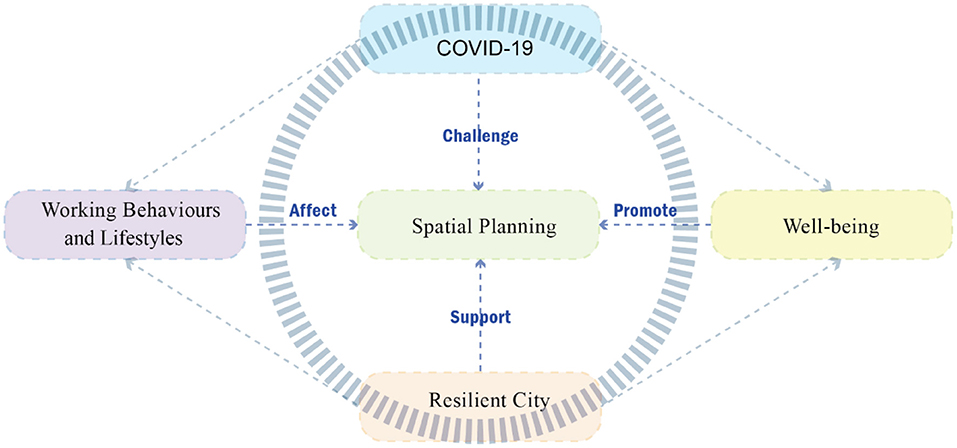
Figure 1. Theoretical framework: how spatial planning plays a significant role in terms of behavioural change, well-being, and creating a resilient city in response to the effects of the COVID-19 pandemic (Source: Authors).
Research Gap
Although the topic of urban planning has been studied extensively, the primary focus of the existing studies has largely been either first-tier cities and/or cities undergoing steady development. Limited studies have explored the direction of development for second-tier cities, and even fewer have used a qualitative method. Therefore, this research explores the impact of COVID-19 on the spatial planning of the second-tier city of Changchun and considers the prospects for more effective urban spatial planning, such as creating resilient cities. Furthermore, unlike COVID-19, other epidemics such as SARS and the Ebola virus have occurred in relatively smaller endemic areas and for a relatively shorter duration [WHO (World Health Organization), 2020a]. Consequently, the existing data for the most part provides broad suggestions on spatial planning for the prevention and control of infectious diseases. There is little clear direction in terms of specific guidelines for national-level spatial planning and operations and urban practises. Studying the responses of China's second-tier cities to COVID-19 will provide a valuable addition to the literature related to urban resilience, spatial planning and the effectiveness of urban governance. Urban spatial planning also plays an important public-health role in responding to public-security crises. Analysis in this area will be of considerable significance and hopefully influence future approaches to spatial planning.
Case Study of Changchun
Changchun, a second-tier city, is centrally located in the northeastern region of the People's Republic of China (see Figure 2). It is the capital of Jilin Province and, as such, is the political, economic, cultural and transportation centre. Changchun covers an area of approximately 20,594 square kilometres, of which the planned area comprises 7,293 square kilometres. By the end of 2015, the city's total population had reached 7.85 million, accounting for 28.5% of the total population of Jilin Province (Kuang et al., 2005). It is also the city with the largest automobile industry in China (Zhou et al., 2020). As part of the declining old industrial base, Changchun's economic growth has significantly slowed in recent years. Therefore, to compete and attract talented workers to live and work in the city, Changchun has invested significantly in construction and development (Yue and Li, 2020). A new urban district has emerged in the northeast which constitutes a centre for the new strategic and high-end service industries.
In response to the spread of COVID-19, the local government in Changchun established a prevention and control headquarters in order to scientifically formulate prevention and control measures, implement prevention and control strategies, actively carry out prevention and control work, and make every effort to safeguard the health and safety of the people of Changchun. The local government also strengthened the management and control of densely populated places, and carried out health screenings for people preparing to enter the city at all highway toll stations. Changchun's health and epidemic prevention department also comprehensively strengthened the city's road cleaning and sanitation services and the daily elimination management of the environmental sanitation infrastructure. In addition, the Ministry of Ecological Environment improved the harmless treatment and transport management of domestic waste.
As a developing second-tier city, Changchun has great potential for conducting experiments in new approaches to planning. Secondly, the situation of Changchun and the planning directive to transform what is known in this context as the Great Northeast Industrial Base, and the focus on the science and technology industries, are factors that are applicable to many cities in the world. This study's practical insights may therefore prove widely applicable. Finally, the COVID-19 pandemic has meant a reduction in the future movement of workers to big cities and, consequently, planning the development of second-tier cities will be higher on the agenda.
Methodology
Qualitative Approach: Semi-structured Interviews
Semi-structured interviews are a flexible and useful means of gathering qualitative data and are appropriate to this type of research and to meeting this study's objectives. They create an opening for narrative and analysis to be introduced, which interview participants can discuss and explore together (Galletta and Cross, 2013; Bryman and Bell, 2019). This approach allows for the in-depth discussion of a nuanced topic but with more structure than a completely free-form interview. It enables some comparison of responses, but still provides opportunities for follow-up questions and a more in-depth discussion. The latter provides researchers with a space to think about the new meanings of the research content (Punch, 2005; Galletta and Cross, 2013). This study presents an analysis of the changes in urban planning caused by the COVID-19 pandemic. It explores people's views on future spatial planning and other directions for development and on the prevention and control of, and planning for, unexpected disasters in cities. Participant views are summarised and analysed and, based on these, suggestions made for future planning and development. This approach requires a greater emphasis on textual and descriptive analysis, rather than quantitative statistics or data (Rose, 1994; Bryman, 2008).
Sampling
As previously mentioned, a qualitative approach is used in this study, in the form of semi-structured interviews with citizens of Changchun. Drawing on relevant studies with similar research aims, a sample size of approximately 20–30 was identified as appropriate (Tinsley and Tinsley, 1987; Comrey, 1988). A snowball sampling method was adopted, which means that participants are asked to identify other people who may also be interested in participating in the research (Cohen and Arieli, 2011; Naderifar et al., 2017). This study actively aimed to interview people from different industries and fields, in order to expand and diversify the pool of potential participants. A best-effort attempt was made to obtain a representative sample and 23 interviewees were finally recruited. We carried out online interviews between May and July 2020. The interviewees represent various groups of people living in Changchun: different ages, genders, occupations and professional qualifications. However, we realise that the number of potential interviewees, particularly planners and policymakers, could be increased in future research. To reduce the risks associated with COVID-19, the interviews were conducted online via video and telephone and each interview lasted between 60 and 90 minutes. This offered greater flexibility in terms of when the interviews could take place (Drabble et al., 2016; Salmons, 2016). The aforementioned data are summarised in Table 1.
Findings and Discussion
The findings are grouped into the following categories in terms of the spatial planning: home working; harm from unanticipated disasters; and construction of a resilient city.
Home Working
Most of the 23 participants interviewed had worked from home, at least those who were not front-line workers, such as medical and police personnel. People employed in different industries expressed various attitudes and solutions to working from home. However, most indicated a degree of discomfort and dissatisfaction with working from home in their current urban context. The respondents' home working arrangements lasted between 1 and 3 months, with most reporting at least some home working during the period from January to March 2020.
Maintaining social distancing and home control methods greatly reduced the spread of the virus during early to mid−2020 (General Office of the State Council, 2020a). However, these measures also had other impacts on residents' lives, as described below:
“As a primary school teacher, I worked at home for a long time. During my time working at home, the school implemented online teaching, but the source of teaching materials was limited, and students are prone to burnout. In exchanges with students, I could also experience when working at home that children desire enough space for free movement, and parents also hope to have a relatively independent space from their children.”
(Interviewee 15, Female, 7/7/2020)
“Due to the closed management of the community, large public places are closed, and the purchase of daily necessities has become a problem. Because there are fewer large supermarkets in the walkable area, people are relatively concentrated, and the effect of the supermarket's ventilation system and the disinfection status are unknown, although online shopping can alleviate the problem. However, logistics, time and quality are sometimes not guaranteed.”
(Interviewee 20, Female, 8/7/2020)
In the northeastern cities which have a less developed economy, many community plans place considerable emphasis on high density development to reduce costs (Chen, 2006). This means that there is a tendency to build many properties on small pieces of land (see Figures 3, 4). There are not many open spaces in residential areas nor are there planned open spaces in the main urban centre, and there are few spaces for community gathering. There are, however, many large green spaces and mountain forests on the periphery of the city, and new community centres are being built, as shown in Figures 5, 6.
The following comments illustrate some of the interviewees' views on the use of urban space in Changchun:
“I live in the old city centre, the planned area of green space in the community is very small, and the ineffective local governance means the community does not have enough areas for activities.”
(Interviewee 21, Female, 9/7/2020)
“It takes 40 minutes to drive from my home (Jingyuetan District) to the old city where I work, but the surrounding facilities are very good, especially Jingyuetan Park which is about 10 minutes' walk away from my home. Outdoor activities are very convenient.”
(Interviewee 16, Male, 9/7/2020)
“The city of Changchun is expanding from the west to Daling, developing real estate companies to the south, Beihu Wetland Park to the north, and the Lianhua Mountain Group block to the east.”
(Interviewee 9, Male, 7/7/2020)
“The development of different districts in Changchun is different, and now houses that are far away from the main urban area are becoming more popular choices for citizens, and housing prices keep increasing because of the lower plot ratio and beautiful natural environment such as Jingyue Lake, Lianhua Mountain, Beihu Wetland Park and other places, and most of the villas are located here.”
(Interviewee 6, Female, 8/7/2020)
The disparate and unequal conditions in which citizens live become exacerbated when they are restricted to their local area, as was the case during the COVID-19 lockdown. The lack of public space and the inconvenience of accessing community resources are points of concern. Public open space is important for maintaining urban public health (Thompson and Travlou, 2009), as well as being an important reserve that can be used to address shortages of space within the urban emergency system (Feuerstein and Mueller, 2013). Under Changchun's current spatial planning and construction regime, the quality of the human settlement environment is generally not high. This is primarily because of a lack of public spaces such as leisure facilities and ecological green spaces. This has particularly negative consequences for quality of life and logistical support in the context of a pandemic.
Lee and Maheswaran (2010) outlined the appropriate features of urban green spaces which can support emergency responses. They asserted that there should be enough multi-functional open space to ensure that town parks, squares, community, and fitness facilities of different scales can be effectively combined with, or turned into, emergency shelters. Secondly, the layout of the engineering infrastructure and public spaces should be taken into account to increase the usability of public space for the distribution of energy, water and other elements of infrastructure (Francis, 2003). Urban green spaces should support the creation of temporary or permanent facilities for public-health monitoring and emergency use (Paul et al., 2020). Finally, existing public spaces should be maintained and updated regularly, and resources should be invested in health supervision and management. The planning department should work with other relevant departments such as public-health and public safety to formulate guidelines and management rules for the use of public space during both normal and extraordinary periods (Carmona et al., 2008). This would allow for more precise design and future maintenance and increase the public's awareness of the available facilities.
In addition to the creation of open spaces, the 15-min community life circle (Figures 7, 8) has been an important part of planning discussions in recent years. This refers to the number and quality of community resources that people can access via a 15-min walk from their place of residence. Shanghai has formulated relevant planning and construction guidelines, advocating the creation of community life units categorised as: innovation, coordination, green, open, and sharing units (Sun et al., 2018). In their recommendations for reducing the spread of COVID-19, the World Health Organisation stipulates that people should consider cycling or walking so that they can travel outside, and should keep their distance from others [WHO (World Health Organization), 2020b]. The emphasis on walking and cycling as a means of transport significantly increases the relevance of the 15-min community life circle.
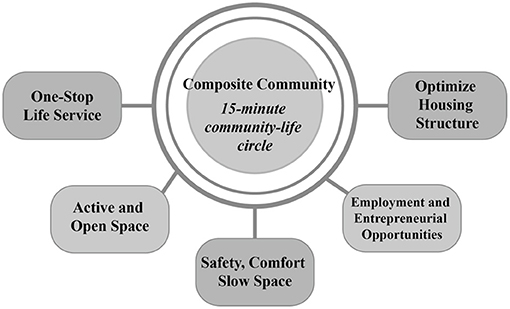
Figure 7. Composite community (Source: adapted from Mei, 2020, p.20).
The following excerpts illustrate some of the interviewees' views on the 15-min community life circle and the living environment in Changchun:
“Building a 15-minute community life circle, you can enjoy the convenience of life, which is suitable for the current pandemic prevention situation.”
(Interviewee 16, Male, 10/7/2020)
“If people want to have a good living environment, they will go far away from the city, but the distance to work has increased. In the later stages of the pandemic, people still try not to take public transportation, but private cars will cause congestion. Even if the government builds more expressways and overpasses around the city, people still waste time and energy on the road.”
(Interviewee 10, Male, 7/7/2020)
“If it is constructed in the current Changchun plan, it is estimated that will be a little bit difficult to implement because the existing old city block has not yet put forward restoration proposals and needs to be renovated slowly, but the community centre which is under construction on the outer ring line might achieve this goal.”
(Interviewee 11, Male, 7/7/2020)
The construction of large-scale closed residential areas should support the creation of open sharing life blocks (Larson et al., 2015). At the same time, the government should ensure effective use of land and of nearby employment spaces and opportunities; public transport hubs and public activity centres should form the core of their plans (Deng, 2018). In Changchun, the close proximity of the First Automobile Works (FAW) Automobile factory and high-tech industrial park should be exploited and community spaces developed nearby. Resources such as the existing urban landscape and historic buildings, including the buildings left over from the period of the city's Manchukuo government, could also provide cultural and creative employment opportunities that are integrated with the surrounding communities (Sivam et al., 2012). Space should also be reserved for cycle lanes when road planning is undertaken. These alterations would improve both Changchun's emergency response and the quality of life for its residents outside of emergency contexts.
Harm Caused by Unanticipated Disasters
According to data released by the Ministry of National Emergency Management, direct economic losses to China caused by natural disasters in 2019 amounted to about 327.09 billion yuan (General Office of the State Council, 2020b). Man-made disturbances, such as disease transmission, environmental pollution, and terrorist attacks, have real economic consequences that cannot be ignored (Orzell, 2008). These negative effects are amplified by the need for cities to accommodate high population densities and economic activity. Urban spatial planning can play an important role in mitigating the consequences of infectious diseases and other disasters, as the following excerpts show:
“I haven't paid serious attention to hidden or man-made disasters before. Besides, Changchun is located on the plain, so there are few natural disasters and I have low vigilance.”
(Interviewee 22, Female, 8/7/2020)
“We usually learn about local disasters in the news, and the seriousness of this pandemic is also known through relevant reports.”
(Interviewee 3, Female, 8/7/2020)
“There is little education and knowledge dissemination of man-made disasters, but the school had earthquake defence drills.”
(Interviewee 4, Female, 7/7/2020)
Despite the potential costs, the national comprehensive disaster prevention and mitigation planning of the General Office of the State Council (2016) does not provide for a specific response to pandemics. However, it does make provision for a response to earthquakes, floods, meteorological disasters, geological disasters, fire and other major safety events. It takes into account the role of the urban system, land layout, and construction of municipal facilities. More detailed and practical preventive measures are provided for the prevention of natural and man-made disasters (see Figure 9). These disaster prevention and mitigation strategies demonstrate a “spatial planning for disaster management” approach that is relevant to various types of disasters, and that recommends facilities for construction, land layout and other methods of pre-disaster warning and in-disaster control.
To mitigate the impact of infectious diseases, the government should add an infectious-disease prevention and control plan to their urban planning strategy (NHC, 2014). First, plans should be developed for isolation facilities since the isolation of infection sources is one of the most effective means to control the spread of disease (HSC, 2020). Secondly, new transport facilities should be created and existing ones improved for people suffering from infectious diseases. In the planning of urban road systems, a special channel should be established for transporting patients with infectious diseases to minimise contact with non-infected people. This will reduce virus transmission by interrupting the transmission route (Schilling et al., 2009). Thirdly, plans for infectious disease treatment facilities should be developed. Taking Xiaotangshan Hospital and Wuhan Leishen Mountain Hospital as examples, it is clear that the treatment of infectious diseases requires a professional and isolated environment and proper planning for the establishment of these is therefore an important link in the prevention and mitigation of infectious diseases (Sims and Kasprzyk, 2020).
Regarding recommendations for decision-makers, they should first publicise the importance of prevention and control in order to raise public awareness and knowledge of epidemic prevention and management, and to convince people of the need to cooperate with prevention and control measures. Second, decision-makers should guarantee the provision of essential daily services, but also enrich spiritual and cultural life for the city's residents. Moreover, decision-makers should also manage communities in a more comprehensive and meticulous way, and tailor measures to local conditions, as well as implementing the epidemic prevention policy.
Urban planners should also take epidemic prevention measures into account in the planning, design, and implementation process. First, they need to consider the importance of traffic emergency capabilities. Planners should also ensure that travel is safe and comfortable, while encouraging active travel (cycling and walking). In addition, urban planners have a long-term responsibility to consider public health when designing urban spaces. For example, ensuring that there is adequate natural light in well-ventilated public spaces can prevent the spread of infectious diseases. At the same time, urban planners should proactively use big data analytics, engage in and enrich data sharing, as well as obtain more fruitful information (Bian, 2013). Planners should also use the experience and information gained during the pandemic to advance spatial planning, and to inform future planning development, thereby avoiding high costs and potential mistakes.
The public should ensure that they too learn lessons from the pandemic, and actively cooperate with epidemic prevention work. Citizens should be encouraged to cultivate a sense of ownership, of community space, and of home and thus to participate more actively in local governance. Moreover, they should also take individual responsibility and report any planning and construction issues to the local government.
Construction of a Resilient City
Resilient cities emerged in the early twenty-first century as a popular topic in urban planning research. Discussions on resilient cities in developed countries such as the United Kingdom and the United States of America are often localised and specific. Studies on resilience also tend to intersect with concepts and technologies such as social equity, public participation, and big data analysis (Davoudi et al., 2012). Chinese cities are quite different from Western cities in terms of their natural conditions, social structures, economic systems, and administrative governance background. The foundations of urban resilience in this context are thus quite different (Vale and Campanella, 2005), as the excerpts below show:
“Changchun can play to its strengths because it has a small population density and a large and sparsely populated area. A resilient city can experiment successfully.”
(Interviewee 13, Female, 8/7/2020)
“There are large areas of green land, wetlands and water sources around Changchun, rich in natural resources, and there are great opportunities for development.”
(Interviewee 1, Female, 8/7/2020)
“For second-tier cities that are developing economies, new attempts require government support and national approval. The Chinese president Xi Jinping recently came to Changchun to give further instructions on the development direction of Changchun and to promote economic and environmentally friendly development. Then vigorous support is required for research into science and technology.”
(Interviewee 13, Male, 25/7/2020)
In order to deal with the uncertainties facing cities, urban development should be based on long-term, flexible thinking. Reserving strategic vacant areas when undertaking spatial planning allows greater flexibility for urban development (Godschalk, 2003). The urban spatial structure can directly affect residents' daily lives and the temporal and spatial patterns of transport, which should therefore be more fully incorporated into urban epidemic prediction and management strategies (Potter and Sailer, 2015). Spatial planning requires more systematic, forward-looking, and strategic thinking. In order to implement urban epidemic prevention planning more effectively, the government should consider territorial and spatial planning in terms of proposed targets, spatial layout, technical capacity, and the supervision of implementation.
The value of open space has become clear during the pandemic, as these spaces have been used for the construction of temporary medical facilities. Guidelines for the construction of facilities should therefore provide for the emergency conversion of public facilities (Campanella, 2006), for example, facilities such as community activity centres and activity centres for older people were used as pandemic prevention and control centres. Schools, sanatoriums, and hotels have all been used in the COVID-19 emergency response too.
Additional features of resilient cities are systems integrity and a high degree of collaboration. Resilient industries have robust links within the supply chain, ensuring self-sufficiency and timely adjustment in emergencies (Malalgoda and Haigh, 2018). Flexible production can address a business's pain points; key to this is the intelligent and automatic application of big data (Schneider et al., 2020). The first step in achieving this sort of flexible production is the establishment of a virtual enterprise through which to realise the combination of production modes. The second step is to establish a flexible production system, that can determine, based on customer orders, which products will be produced and on what scale. Third, to allow the entire chain of production to be completed in one location, a centralised production space should be created.
Given its current stage of industrial development and the development of the FAW auto industry, Changchun can learn from the intelligent manufacturing models of Japan and Germany. These models would play to Changchun's existing manufacturing strengths and would allow the integration of intelligent manufacturing and innovative research into the entire manufacturing process. This would form a more complete industrial system and collaboration chain, as well as a more resilient system overall (see Figure 10).
Smart data systems are an important component of resilient cities, as they support community governance (Thomas et al., 2017). During the pandemic, many towns and villages across Changchun adopted a system for monitoring the movement of people. A “Health code” and “travel records code”4 system was set up. Intelligent technology such as video surveillance, facial recognition and access control recognition were used to track the trajectory of quarantined persons and confirmed cases (Nitoslawski et al., 2019). These methods should be further optimised and promoted. Furthermore, smart-information platforms should be used for the enhanced collection of information about residents, community-access management and community-security monitoring. This will enhance Changchun's resilience and allow it to respond rapidly to new emergencies.
Conclusions
Our research has explored the implications of COVID-19 for spatial planning, well-being and behavioural change using Changchun as a case study. Semi-structured interviews were used to examine the views and insights of 23 participants. Our results show that, first, the shift to home working has changed people's way of life, affected their subjective well-being, and significantly affected spatial planning within cities, placing greater demands on architectural design and community spatial planning. Therefore, additional open public spaces and a more supportive infrastructure are required. Second, it was found that Changchun has not established an effective community-based spatial planning system, and this is something which should have been taken into consideration in the master plan for the future. Third, our findings suggest that becoming a resilient city is vital for the sustainable development of second-tier cities like Changchun, which is reflected in urban development patterns, disaster prevention, and long-term functional layout, among other aspects.
Each major infectious-disease pandemic experienced has sparked new ideas, methods and standards in urban planning and design. These pandemics often provide a clear motivation for authorities to promote the healthy development of cities (Kreimer et al., 2003). This is particularly so in the case of Changchun, because the government's previous approach of expansive development is no longer appropriate in the new era of people-oriented approaches to urban planning. We argue that the Changchun authorities should aim to create an urban spatial layout based on the city's natural geographical conditions. This study also discussed how the concept of resilient cities can be applied to second-tier Chinese cities and considered the role of big data management and intelligent technology in the planning of urban living.
There are two main implications derived for our findings for future studies. First, similar research could be conducted in other small and medium-sized cities in China to enhance China's overall pandemic-response capacity, and to improve the quality of life for all of its people. Previous approaches to urban development have focused on spatial planning that provides for the economic and physical expansion of the city, but have not incorporated protection against natural disasters, including pandemics (Cyranoski, 2003; Davis and Siu, 2014; Liu and Yang, 2014). Due to the fact that they are in a growth phase, developing small, and medium-sized cities are uniquely well-placed to take a more agile and resilient approach to their future planning. Second, when establishing a land-use planning system, many cities need to shift their focus to more people-oriented planning and urban renewal. Policymakers and urban planners should consider how to support community groups, develop rapid early-warning and prediction systems, and systematise public-service systems.
Data Availability Statement
The data supporting the conclusions of this article can only be made available for academic research. Requests to access the datasets should be directed to m.cao@westminster.ac.uk.
Ethics Statement
The studies involving human participants were reviewed and approved by UCL Ethics Committee. The patients/participants provided their written informed consent to participate in this study.
Author Contributions
XS: conceptualisation, data curation, formal analysis, investigation, methodology, visualisation, and writing-original draft. MC: conceptualisation, formal analysis, funding acquisition, methodology, supervision, and writing-original draft. KZ, MW, and TY: validation and writing—review and editing. XG: methodology and writing—review and editing. All authors contributed to the article and approved the submitted version.
Funding
This research was funded by the NSFC (Project No. 51808392), the EPSRC (EPSRC Reference: EP/R035148/1), the SCUE fund, and School Funding from the University of Westminster.
Conflict of Interest
The authors declare that the research was conducted in the absence of any commercial or financial relationships that could be construed as a potential conflict of interest.
The handling editor declared a past co-authorship with one of the authors, MC.
Footnotes
1. ^Multiple-gauge fusion is a space planning exploration method that integrates planning, implementation, management and supervision mechanisms.
2. ^Wuhan Metropolitan Area, also known as “1+8” city circle of Wuhan, refers to a city cluster consisting of 8 large and medium-sized cities around Wuhan, namely Huangshi, Ezhou, Huanggang, Xiaogan, Xianning, Xiantao, Qianjiang, and Tianmen. Wuhan is the central city, and Huangshi is the sub-central city.
3. ^Sunshine spacing means the minimum distance that the back row of houses receives no <2 h of sunshine during the winter solstice between the two rows of south-facing houses.
4. ^The health code is based on real data, which can be generated by citizens or reworked by personnel through an online declaration and, after a background review, a personal QR code can be generated. The QR code is used as an electronic voucher for individuals to pass in and out of the local area, and acts as a one-time declaration, which is universally recognised in the city. The health code was launched with the aim of making the resumption of work and production safer, more accurate, scientific, and orderly.
References
Adams, N., Alden, J., and Harris, N. (2016). Regional Development and Spatial Planning in an Enlarged European Union. London: Routledge. doi: 10.4324/9781315604411
Ali, H. M., Dom, M. M., and Sahrum, M. S. (2012). Self-sufficient community through the concepts of collective living and universal housing. Procedia 68, 615–627. doi: 10.1016/j.sbspro.2012.12.253
Arab-Zozani, M., and Hassanipour, S. (2020). Sharing solidarity experiences to overcome COVID-19. Annals Glob Health 86:114. doi: 10.5334/aogh.3035
Bian, L. (2013). Spatial approaches to modeling dispersion of communicable diseases - a review. Transac. GIS 17, 1–17. doi: 10.1111/j.1467-9671.2012.01329.x
Bryman, A., and Bell, E. A. (2019). Social Research Methods. Don Mills, ON: Oxford University Press.
Campanella, T. J. (2006). Urban resilience and the recovery of New Orleans. J Am Plann Assoc. 72, 141–146. doi: 10.1080/01944360608976734
Carmona, M., Hammond, L., and de Magalhães, C. (2008). Public Space: The Management Dimension. Abingdon: Routledge. doi: 10.4324/9780203927229
CDC (Centers for disease Control Prevention) (2020). Show Me the Science - Why Wash Your Hands? Available online at: https://www.cdc.gov/handwashing/why-handwashing.html (accessed July 12, 2020).
CGTN (2020a). Wuhan Vlog: A Look Into a Mobile Cabin Hospital (Video Online). Available online at: http://www.youtube.com/watch?v=GR0RxurA57sandt=0h0m0s (accessed July 12, 2020).
CGTN (2020b). ‘The Pandemic' Review of CGTN. Available online at: https://news.cgtn.com/event/2020/The-Pandemic/index.html (accessed July 12, 2020).
Chen, A. Y., and Yu, T. Y. (2016). ‘Network based temporary facility location for the Emergency Medical Services considering the disaster induced demand and the transportation infrastructure in disaster response'. Transport Res Part B 91, 408–423. doi: 10.1016/j.trb.2016.06.004
Chen, C.Y. (2006). The Determination Mechanism of Urban Housing Plot Ratio [Online]. Available online at: https://wenku.baidu.com/view/3517bca5bb4cf7ec4afed083.html (accessed July 22, 2020) (in Chinese).
Chen, S., He, W., and Jin, Y. H. (editors) (2006). An Introduction to Urban Planning. Beijing: Science Press (in Chinese).
Coffee, J. E., Parzen, J., Wagstaff, M., and Lewis, R. S. (2010). Preparing for a changing climate: the Chicago climate action plan's adaptation strategy. J. Great Lakes Res. 36, 115–117. doi: 10.1016/j.jglr.2009.11.011
Cohen, N., and Arieli, T. (2011). Field research in conflict environments: methodological. challenges and snowball sampling. Rev J Peace Res. 48, 423–435. doi: 10.1177/0022343311405698
Cohut M. (2020) ‘Why Hand Washing Really Could Slow Down an Epidemic' Review of Medical News Today. Available online at: https://www.medicalnewstoday.com/articles/why-hand-washing-really-could-slow-down-an-epidemic#30%-of-people-do-not-wash-their-hands (accessed June 22, 2020).
Comrey, A. L. (1988). Factor-analytic methods of scale development in personality and clinical psychology. J. Consult. Clin. Psychol. 56, 754–761. doi: 10.1037/0022-006X.56.5.754
Davis, D., and Siu, H. F. (2014). SARS: Reception and Interpretation in Three Chinese Cities. London: Routledge.
Davoudi, S., Shaw, K., Haider, L. J., Quinlan, A. E., Peterson, G. D., Wilkinson, C., et al. (2012). Resilience: a Bridging Concept or a Dead End? “Reframing” Resilience: Challenges for planning theory and practice interacting traps: resilience assessment of a pasture management system in Northern Afghanistan Urban Resilience: what does it mean in planning practice? Resilience as a useful concept for climate change adaptation? The politics of resilience for planning: a cautionary note. Plann Theory Pract. 13, 299–333. doi: 10.1080/14649357.2012.677124
Deng, F. (2018). Work unit and private community in the evolution of urban planning in contemporary China. Rev. Plann. Theory 17, 533–550. doi: 10.1177/1473095217734413
Disaster Research Center (1995). Emergent Behaviors and Groups in the Crisis Time of Disasters. Newark, NJ: Disaster Research Center, University of Delaware.
Drabble, L., Trocki, K., Salcedo, B., Walker, P., and Korcha, R. (2016). Conducting qualitative interviews by telephone: lessons learned from a study of alcohol use among sexual minority heterosexual women. Qual. Soc. Work 15, 118–133. doi: 10.1177/1473325015585613
Dühr, S., Colomb, C., and Nadin, V. (2010). European Spatial Planning and Territorial Cooperation. London; New York, NY: Routledge. doi: 10.4324/9780203895290
Engelfriet, L., and Koomen, E. (2017). The impact of urban form on commuting in large Chinese cities. Transportation 45, 1269–1295. doi: 10.1007/s11116-017-9762-6
Faludi, A., and Institute, L. (2002). European Spatial Planning. Cambridge, MA: Lincoln Institute of Land Policy, Cop.
Feuerstein, G., and Mueller, I. K. (2013). Open Space: Transparency, Freedom, Dematerialisation. Stuttgart: Edition Axel Menges.
Francis, M. (2003). Urban Open Space: Designing for User Needs (Case Studies in Land and Community Design Series). London: Island Press.
Galletta, A., and Cross, W. E. (2013). Mastering the Semi-structured Interview and Beyond: From Research Design to Analysis and Publication. New York, NY: New York University Press. doi: 10.18574/nyu/9780814732939.001.0001
General Office of the State Council (2020a). ‘China's Response to COVID-19. Available onlin at: http://www.gov.cn/zhengce/2020-06/07/content_5517737.htm (accessed July 15, 2020).
General Office of the State Council (2020b). The ministry of emergency management released the basic situation of natural disasters nationwide in 2019. Available onlin at: http://www.gov.cn/xinwen/2020-01/17/content_5470130.htm (accessed August 31, 2020).
Godschalk, D. R. (2003). Urban hazard mitigation: creating resilient cities. Natural Hazards Rev. 4, 136–143. doi: 10.1061/(ASCE)1527-6988(2003)4:3(136)
Holguín-Veras, J., Pérez, N., Ukkusuri, S., Wachtendorf, T., and Brown, B. (2007). Emergency logistics issues affecting the response to Katrina. Transpor. Res. Record. 2022, 76–82. doi: 10.3141/2022-09
Holt, W.G. (2014). From Sustainable to Resilient Cities: Global Concerns and Urban Efforts. Bingley: Emerald.
HSC (Health Social Care) (2020). Northern Ireland Regional Infection Prevention and Control Manual: Isolation of Patients. Niinfectioncontrolmanual.net. Available online at: https://www.niinfectioncontrolmanual.net/isolation-patients (accessed July 17, 2020).
Hu, Y., de Roo, G., and Lu, B.. (2013) Communicative turn” in Chinese spatial planning? exploring possibilities in Chinese contexts. Cities 35, 42–50. doi: 10.1016/j.cities.2013.05.001
Hubei Provincial Development Reform Commission (2009). Outline of Wuhan Metropolitan Area Master Plan. Available online at: http://fgw.hubei.gov.cn/fbjd/xxgkml/ghjh/201703/t20170327_1543776.shtml (accessed July 12, 2020).
Ibrahim, M. S. (2007). Disaster types. Disaster Prevent. Manage. 16:704. doi: 10.1108/09653560710837019
IFC (International Finance Corporation) (2020). Sector Notes Exploring Impact of COVID-19 on Infrastructure. Available online at: https://www.ifc.org/wps/wcm/connect/industry_ext_content/ifc_external_corporate_site/infrastructure/resources/covid%20infra%20publications (accessed July 24, 2020).
Jamal, A. (2017). Cities of tomorrow launched for modern living in Singapore. Review of connected to India. Available online at: https://www.connectedtoindia.com/cities-of-tomorrow-launched-for-modern-living-in-singapore-1972.html (accessed July 14, 2020).
Jia, J. S., Lu, X., Yuan, Y., Xu, G., Jia, J., and Christakis, N. A. (2020). Population flow drives spatio-temporal distribution of COVID-19 in China. Nature 582, 389–394. doi: 10.1038/s41586-020-2284-y
Jiao, S. Y. (2020). Planning Apocalypse Under the Epidemic. Ministry of Natural Resources of the People's Republic of China, China Natural Resources News. Available online at: http://www.mnr.gov.cn/dt/ywbb/202003/t20200311_2501161.html (accessed July 12, 2020).
Kauf, S. (2016). City logistics – A strategic element of sustainable urban development. Transpor. Res. Proc. 16, 158–164. doi: 10.1016/j.trpro.2016.11.016
Korczak, J., and Kijewska, K. (2019). Smart logistics in the development of smart cities. Transpor. Res. Proc. 39, 201–211. doi: 10.1016/j.trpro.2019.06.022
Kreimer, A., Arnold, M., and Carlin, A. (2003). Building Safer Cities the Future of Disaster Risk. Washington, DC: World Bank.
Krykavskyy, Y., and Woronina, R. (2015). The impact of globalization on the development of city logistics. Annales Univer. Mariae Curie-Skłodowska 49:81. doi: 10.17951/h.2015.49.3.81
Kuang, W. H., Zhang, S. W., Zhang, Y. Z., and Seng, Y. (2005). Analysis on spatial expansion mechanism of land use in Changchun since 1900. Rev. Acta Geogr. Sinica. (2005). Available online at: https://xueshu.baidu.com/usercenter/paper/show?paperid=697e2c0c9271229586638d9724b2872aandsite=xueshu_se (accessed July 12, 2020).
Larson, S., Bush, L., and Barry, S. (2015). Sharing Open Space: What to Expect from Grazing Livestock. University of California, Agriculture and Natural Resources.
Lee, A. C. K., and Maheswaran, R. (2010). The health benefits of urban green spaces: a review of the evidence. J. Public Health 33, 212–222. doi: 10.1093/pubmed/fdq068
Li, B.Y. (2020). The Importance and Urgency of Planning for the Prevention and Control of Infectious Diseases in Cities. People's Daily. Available online at: https://wap.peopleapp.com/article/rmh11741272/rmh11741272 (accessed July 14, 2020).
Liu, J. P., and Yang, L. (2014). Risk of Rapid Urbanization in China and Transformation of Urban Governance. Review of Chinese Public Administration.
Malalgoda, C, Amaratunga, D., and Haigh, R. (2018). Empowering local governments in making cities resilient to disasters: research methodological perspectives. Proc. Eng. 212, 902–909. doi: 10.1016/j.proeng.2018.01.116
Morphet, J. (1994). Parks, Open Space and the Future of Urban Planning. Stroud: Comedia In Association with Demos.
Murphy, R. (2009). Labour Migration and Social Development in Contemporary China. London; New York, NY: Routledge. doi: 10.4324/9780203890592
Naderifar, M., Goli, H., and Ghaljaie, F. (2017). Snowball Sampling: A Purposeful Method of Sampling in Qualitative. Available online at: https://www.researchgate.net/publication/324590206_Snowball_Sampling_A_Purposeful_Method_of_Sampling_in_Qualitative_Research/link/5c1de8b4458515a4c7f01a95/download (accessed July 16, 2020).
NBS (National Bureau of Statistics) (2019). 2019 Migrant Workers Monitoring Survey Report. Available online at: http://www.stats.gov.cn/tjsj/zxfb/202004/t20200430_1742724.html (accessed July 2, 2020).
NHC (National Health Commission) (2014). Major Achievements in Patriotic Health Work in Recent Years. National Health Commission of the People's Republic of China. Available online at: http://www.nhc.gov.cn/jnr/agwsrgzjz/201404/fa99611391084985b5e5060c60bb7b0e.shtml (accessed July 9, 2020).
NHC (National Health Commission) (2020). The General Office of the National Health Commission Issued Guidelines on the Prevention and Control of Infection by Novel Coronavirus Isolation at Home Under Medical Observation. [online] www.gov.cn. Available online at: http://www.gov.cn/zhengce/zhengceku/2020-02/05/content_5474688.htm (accessed June 29, 2020).
NHS (National Health Service) (2020). Isolation Procedure ICPr012. Available online at: https://www.nhft.nhs.uk/download.cfm?doc=docm93jijm4n1411 (accessed July 15, 2020).
Nitoslawski, S. A., Galle, N. J., Van Den Bosch, C. K., and Steenberg, J. W. N. (2019). Smarter ecosystems for smarter cities? A review of trends, technologies, and turning points for smart urban forestry. Sustain. Cities Soc. 51:101770. doi: 10.1016/j.scs.2019.101770
NRC (National Research Council) (1999). Reducing Disaster Losses Through Better Information, Board on Natural Disasters, Commission on Geosciences, Environment, and Resources, National Research Council. Washington, DC: National Academy Press.
OECD (2001). Towards a New Role for Spatial Planning. Paris: Organisation for Economic Co-Operation and Development.
Orzell, S. (2008). The Effects of Natural and Man-Made Disturbances, Ch. 8. online. www.dodbiodiversity.org. Available online at: http://www.dodbiodiversity.org/ch8/index.html (accessed July 3, 2020).
Paravicini G. (2020) Rwanda Keeping Coronavirus at Bay With Campaign of Public Hand Washing. Available online at:https://www.usnews.com/news/world/articles/2020-03-11/rwanda-keeping-coronavirus-at-bay-with-campaign-of-public-handwashing (accessed July 15, 2020).
Paul, A., Nath, T. K., Noon, S. J., Islam, M. M., and Lechner, A. M. (2020). Public open space, green exercise and well-being in Chittagong, Bangladesh. Urban Forestry Urban Greening 55:126825. doi: 10.1016/j.ufug.2020.126825
Pearson, L. J., Newton, P., and Roberts, P. (2014). Resilient Sustainable Cities: A Future. London: Routledge, Cop. doi: 10.4324/9780203593066
Potter, G. E, Smieszek, T., and Sailer, K. (2015). Modeling workplace contact networks: the effects of organizational structure, architecture, and reporting errors on epidemic predictions. Netw. Sci. 3, 298–325. doi: 10.1017/nws.2015.22
Punch, K. (2005). Introduction to Social Research: Quantitative and Qualitative Approaches, 2nd ed. London: Sage.
Rose, K. (1994). Unstructured and semi-structured interviewing. Nurse Res. 1, 23–32. doi: 10.7748/nr.1.3.23.s4
Schilling, S., Follin, P., Jarhall, B., Tegnell, A., Lastilla, M., Bannister, B., et al. (2009). European concepts for the domestic transport of highly infectious patients. Clin. Microbiol. Infect. 15, 727–733. doi: 10.1111/j.1469-0691.2009.02871.x
Schneider, D., Fröhlich, T., Huth, T., and Vietor, T. (2020). Design for flexibility – evaluation interactions between product properties and production processes. Proc CIRP 91, 814–818. doi: 10.1016/j.procir.2020.02.240
Seo, S. (2019). Natural and Man-made Catastrophes: Theories, Economics, and Policy Designs. Hoboken, NJ: John Wiley and Sons, Inc. doi: 10.1002/9781119416838
Sims, N., and Kasprzyk, K. H. (2020). Future perspectives of wastewater-based epidemiology: monitoring infectious disease spread and resistance to the community level. Environ. Int. 139:105689. doi: 10.1016/j.envint.2020.105689
Sivam, A., Karuppannan, S., and Mobbs, M. (2012). How “open” are open spaces: evaluating transformation of open space at residential level in Adelaide – a case study. Local Environ. 17, 815–836. doi: 10.1080/13549839.2012.688734
Sun, X., Wang, W., Sun, T., and Wang, Y. (2018). Understanding the living conditions of Chinese urban neighborhoods through social infrastructure configurations: the case study of Tianjin. Sustainability 10:3243. doi: 10.3390/su10093243
Thomas, S., Xu, F.J., Yang, Y., and Lu, M. (2017). A master data management solution to unlock the value of big infrastructure data for smart, sustainable and resilient city planning. Proc. Eng. 196, 939-947. doi: 10.1016/j.proeng.2017.08.034
Thompson, C. W., and Travlou, P. (2009). Open Space: People Space. London; New York, NY: Taylor and Francis.
Tinsley, H. E., and Tinsley, D. J. (1987). Uses of factor analysis in counseling psychology research. J. Counseling Psychol. 34, 414–424. doi: 10.1037/0022-0167.34.4.414
Vale, L. J., and Campanella, T. J. (2005). The Resilient City: How Modern Cities Recover From Disaster. New York, NY: Oxford University Press. doi: 10.1093/oso/9780195175844.001.0001
Watson, B. (2014). What Makes a City Resilient?. Available online at: https://www.theguardian.com/cities/2014/jan/27/what-makes-a-city-resilient (accessed June 20, 2020).
Wey, W. M. (2019). Constructing urban dynamic transportation planning strategies for improving quality of life and urban sustainability under emerging growth management principles. Sustain. Cities Soc. 44, 275–290. doi: 10.1016/j.scs.2018.10.015
WHO (World Health Organization) (2020a). Pandemic, Epidemic Diseases (2020). Available online at: https://www.who.int/emergencies/diseases/en/ (accessed August 12, 2020).
WHO (World Health Organization) (2020b). Timeline for COVID-19 Response. [online] www.who.int. Available online at: https://www.who.int/zh/news-room/detail/27-04-2020-who-timeline—covid-19 (accessed July 15, 2020).
Ye, B., and Luo, H. M. (2020). Some experiences of urban planning in response to public health events in megacities (in Chinese). City Plann. Rev. 44, 118–119. doi: 10.11819/cpr20201603v
Yue, F. R., and Li, J. D. (2020). Seek Improvement in Stability, Promote the Revitalization and Development of Changchun Review of People.cn. Available online at: http://opinion.people.com.cn/n1/2020/0831/c1003-31841968.html (accessed July 12, 2020).
Zhou, G. L., Li, C. G., and Zhang, J. (2020). Identification of urban functions enhancement and weakening based on urban land use conversion: a case study of Changchun, China. PLoS ONE 15:e0234522. doi: 10.1371/journal.pone.0234522
Zhu, W. Y. (2020). My home office: architecture in digital age (in Chinese). Urban Design. 3, 14–21. doi: 10.16513/j.urbandesign.2020.03.003
Zou, L. (2020). ‘Thinking About Urban Planning Under the COVID-19' China Onstruction News. Available online at: http://www.chinajsb.cn/html/202004/07/9191.html (accessed July 12, 2020).
Keywords: COVID-19, spatial planning, urban planning, behavioural change, well-being, resilient city, public health
Citation: Song X, Cao M, Zhai K, Gao X, Wu M and Yang T (2021) The Effects of Spatial Planning, Well-Being, and Behavioural Changes During and After the COVID-19 Pandemic. Front. Sustain. Cities 3:686706. doi: 10.3389/frsc.2021.686706
Received: 27 March 2021; Accepted: 19 May 2021;
Published: 25 June 2021.
Edited by:
Ruoyu Wang, University of Edinburgh, United KingdomCopyright © 2021 Song, Cao, Zhai, Gao, Wu and Yang. This is an open-access article distributed under the terms of the Creative Commons Attribution License (CC BY). The use, distribution or reproduction in other forums is permitted, provided the original author(s) and the copyright owner(s) are credited and that the original publication in this journal is cited, in accordance with accepted academic practice. No use, distribution or reproduction is permitted which does not comply with these terms.
*Correspondence: Mengqiu Cao, m.cao@westminster.ac.uk
 Xinyao Song1
Xinyao Song1  Mengqiu Cao
Mengqiu Cao